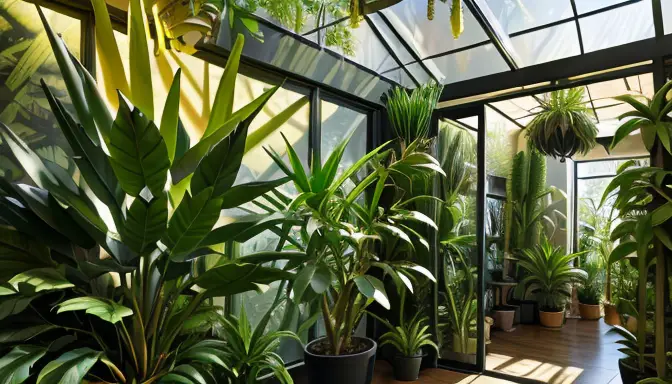
Are you ready to elevate your indoor space with stunning tall succulents that bring a touch of nature’s beauty indoors? From the elegant Echeveria ‘Black Prince’ to the air-purifying Snake Plant, there is a wide array of options to choose from. Let’s delve into the world of indoor tall succulents and discover the best ones suited for your space.
- Echeveria ‘Black Prince’: This succulent is renowned for its dark, dramatic rosettes that exude elegance in any indoor setting. Learn how to care for this striking plant and showcase its beauty effortlessly.
- Aloe Vera: Beyond its medicinal properties, Aloe Vera stands tall as a stunning indoor succulent. Uncover its care routine, benefits, and versatile uses.
- Ponytail Palm (Beaucarnea Recurvata): With a unique trunk and cascading foliage, this palm is a popular choice for indoor spaces. Explore its care needs and creative display ideas.
- Crassula Ovata (Jade Plant): Symbolizing good luck, this versatile succulent can grow tall indoors. Discover tips for caring for the Jade Plant and promoting its prosperity.
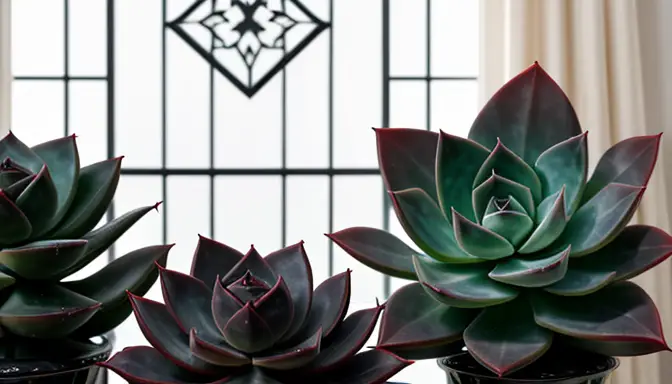
1. Echeveria ‘Black Prince’
Echeveria ‘Black Prince’ is a stunning tall succulent known for its dark and dramatic rosettes, adding an elegant touch to any indoor space.
This unique plant requires specific care to thrive and showcase its beauty effectively..
Here are some essential care tips and creative ideas to incorporate Echeveria ‘Black Prince’ into your home decor:
- Light: Place the succulent in a bright spot with indirect sunlight to maintain its vibrant color.
- Watering: Allow the soil to dry out completely between waterings to prevent root rot.
- Soil: Use well-draining soil to ensure proper air circulation around the roots.
- Temperature: Keep Echeveria ‘Black Prince’ in a warm environment above 50°F (10°C).
When showcasing this succulent, consider planting it in a decorative pot or arranging it with other plants to create a visually appealing display. With the right care and placement, Echeveria ‘Black Prince’ can be a striking focal point in your indoor garden.
2. Aloe Vera
Aloe Vera, known for its medicinal properties and stunning appearance, is a must-have tall succulent for indoor spaces. This versatile plant not only adds a touch of greenery but also offers numerous benefits. Here’s a closer look at how to care for Aloe Vera and make the most of its unique features:
Loading... Seconds Left for
Miniature Orchid Terrarium Gallery!

- Care Routine: Aloe Vera thrives in well-draining soil and bright, indirect sunlight. Water the plant deeply but infrequently, allowing the soil to dry out between waterings. Avoid overwatering to prevent root rot.
- Benefits: Apart from its aesthetic appeal, Aloe Vera is renowned for its healing properties. The gel inside its leaves can be used to soothe sunburns, moisturize the skin, and promote overall well-being.
- Usage: Harvest the gel by cutting a mature leaf and extracting the transparent substance. Apply it directly to the skin for various skin conditions or use it in DIY beauty treatments and health remedies.
By incorporating Aloe Vera into your indoor garden, you not only enhance the visual appeal of your space but also bring a touch of natural healing into your home.
pan id="3_Ponytail_Palm_Beaucarnea_Recurvata">3. Ponytail Palm (Beaucarnea Recurvata)
The Ponytail Palm, scientifically known as Beaucarnea Recurvata, is a captivating tall succulent that can thrive beautifully indoors. Its unique trunk and cascading foliage make it a popular choice for plant enthusiasts looking to add a touch of exotic charm to their living spaces.
When caring for the Ponytail Palm, it is essential to provide it with well-draining soil to prevent root rot. This succulent prefers bright, indirect light and can tolerate periods of drought, making it a low-maintenance option for indoor gardens.
To encourag
e healthy growth, avoid overwatering the Ponytail Palm and allow the soil to dry out between waterings. Additionally, occasional fertilization during the growing season can help promote lush foliage and vibrant growth.
To showcase the beauty of the Ponytail Palm, consider planting it in a decorative pot that complements its unique appearance. Its striking silhouette and graceful leaves make it a perfect focal point in any room, adding a touch of elegance and natural beauty.
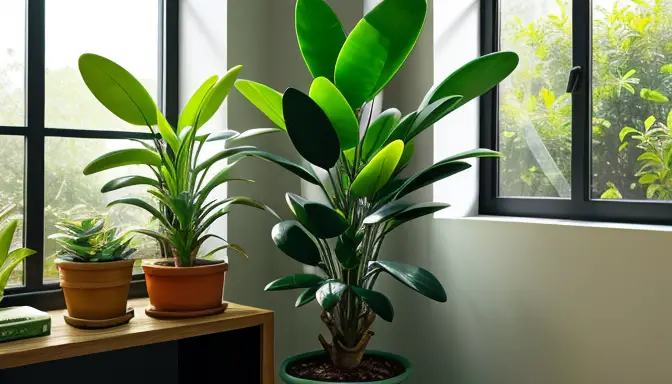
The Crassula Ovata, commonly known as the Jade Plant, is a symbol of good fortune and prosperity, making it a popular choice for indoor succulent enthusiasts. This versatile plant can grow tall and adds a touch of elegance to any space with its vibrant green leaves and sturdy stems.
When caring for your Jade Plant, it’s essential to provide it with well-draining soil to prevent root rot. Water the plant thoroughly but allow the soil to dry out between waterings to avoid overwatering. Place your Jade Plant in a bright location with indirect sunlight to promote healthy growth.
Pruning your Jade Plant can help maintain its shape and encourage new growth. Remove any dead or damaged leaves regularly to keep the plant looking its best. Additionally, fertilize your Jade Plant sparingly during the growing season to support its growth.
To propagat
e your Jade Plant, you can use stem cuttings or leaf cuttings.Allow the cuttings to dry and callus before planting them in a well-draining soil mix..
With proper care and attention, your Jade Plant will thrive and bring a touch of natural beauty to your indoor space.
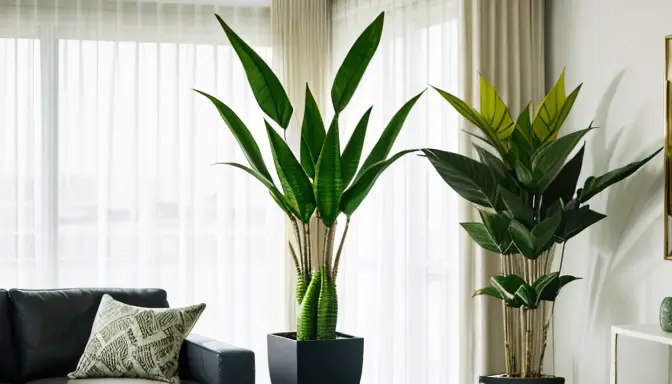
5. Sansevieria Trifasciata (Snake Plant)
Known for its air-purifying qualities, the Snake Plant is a low-maintenance tall succulent ideal for indoor environments. This resilient plant not only adds a touch of greenery to your space but also helps improve air quality by removing toxins. Its upright leaves with striking patterns make it a visually appealing addition to any room. When caring for the Snake Plant, ensure it receives indirect sunlight and water sparingly, as it is prone to root rot. Propagating this plant is relatively simple, as it can be done through division or leaf cuttings. Consider placing the Snake Plant in decorative pots or hanging planters to enhance its decorative potential.
ear:both; margin-top:0em; margin-bottom:1em;">See also
Fascinating Flowers That Start with the Letter F
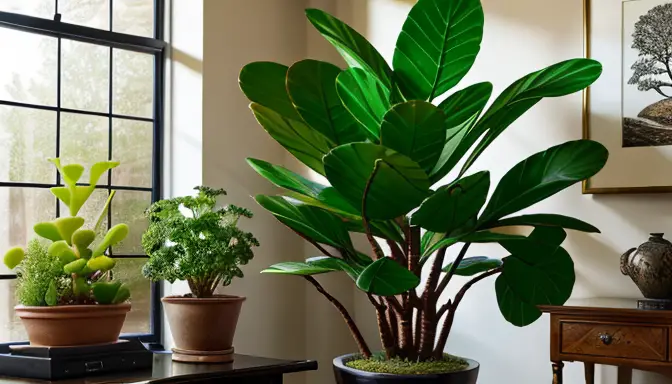
6. Kalanchoe Beharensis (Velvet Elephant Ear)
Kalanchoe Beharensis, also known as the Velvet Elephant Ear succulent, is a captivating plant that can bring a touch of exotic beauty to your indoor space. With its velvety leaves and unique silhouette, this succulent is sure to be a stunning focal point in any room.
When caring for Kalanchoe Beharensis, it is important to provide it with the right conditions to thrive.
This succulent prefers bright, indirect light and well-draining soil to prevent root rot..
Water the plant sparingly, allowing the soil to dry out between waterings to avoid overwatering.
To enhance
the beauty of the Velvet Elephant Ear succulent, consider incorporating it into your home decor in creative ways. Display it in a decorative pot on a sunny windowsill or as part of a succulent arrangement to add a touch of elegance and charm to your living space.
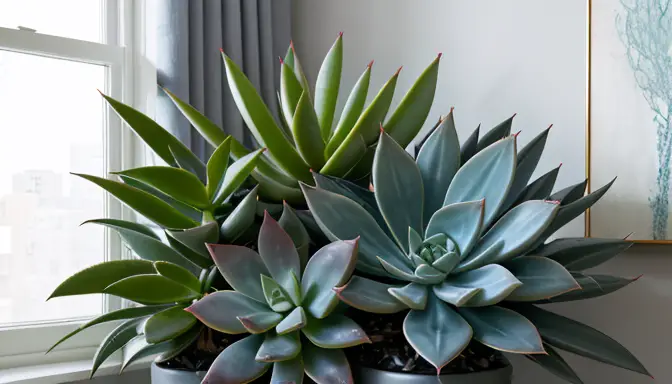
7. Senecio Mandraliscae (Blue Chalksticks)
Senecio Mandraliscae, commonly known as Blue Chalksticks, is a captivating succulent that brings a touch of elegance to indoor gardens. With its unique blue-gray foliage and trailing habit, this plant is a stunning addition to any space. Care for Blue Chalksticks involves providing ample sunlight, well-draining soil, and occasional watering to thrive.
To propagat
e Senecio Mandraliscae, you can easily root stem cuttings in a well-draining soil mix.
This succulent is relatively low-maintenance, making it an ideal choice for beginners or busy plant enthusiasts..
Its cascading growth habit makes it perfect for hanging baskets or as a trailing feature in a succulent arrangement.
When incorporating Blue Chalksticks into your decor, consider pairing it with contrasting plants to highlight its unique color and texture. This succulent can also be used to create a striking centerpiece or as a focal point in a succulent garden. Its ornamental value and easy care requirements make it a popular choice among indoor plant lovers.
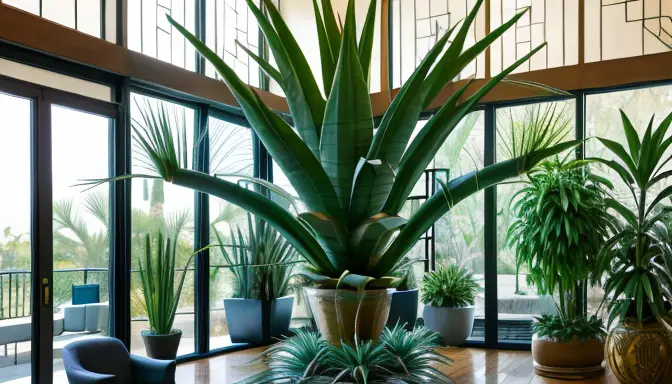
8_Agave_Americana_Century_Plant">8. Agave Americana (Century Plant)
Agave Americana, commonly known as the Century Plant, is a striking succulent that commands attention with its architectural presence and bold foliage.
This impressive plant can grow tall indoors, making it a captivating choice for succulent enthusiasts looking to add a touch of drama to their living space..
When caring for Agave Americana, it is important to provide ample sunlight, as this plant thrives in bright, indirect light. Additionally, ensure well-draining soil to prevent root rot and water sparingly, allowing the soil to dry out between waterings.
One of the unique features of the Century Plant is its slow growth pattern, with the plant taking several years to reach its full height. This gradual growth adds to the plant’s mystique and allure, making it a long-term investment in your indoor garden.
To showcase
the beauty of Agave Americana in your home, consider placing it in a prominent spot where its striking foliage and sculptural form can be appreciated.Whether displayed solo or as part of a succulent arrangement, the Century Plant is sure to make a statement in any room..
Frequently Asked Questions
- What are the best indoor tall succulents for beginners?
For beginners, easy-to-care-for tall succulents like Snake Plants and Jade Plants are recommended. These plants require minimal maintenance and can thrive in various indoor conditions.
- How often should I water tall indoor succulents?
Watering frequency varies based on the succulent type and environmental factors. As a general rule, allow the soil to dry out between waterings to prevent overwatering, which can lead to root rot.
- Can tall indoor succulents survive in low-light conditions?
While most succulents prefer bright, indirect light, there are varieties like Snake Plants and ZZ Plants that can tolerate low-light environments. Consider the lighting needs of each succulent when choosing the best spot in your home.
="abh_tab_content">
Hello, I'm Katie Owen! I am the voice behind "plantandseedguide," inviting you on a journey through the enchanting world of greenery. The magical beauty of nature and the fascinating realm of plants have always captivated me, leading me to this space.
Latest posts by Katie Owen
(see all)v>







